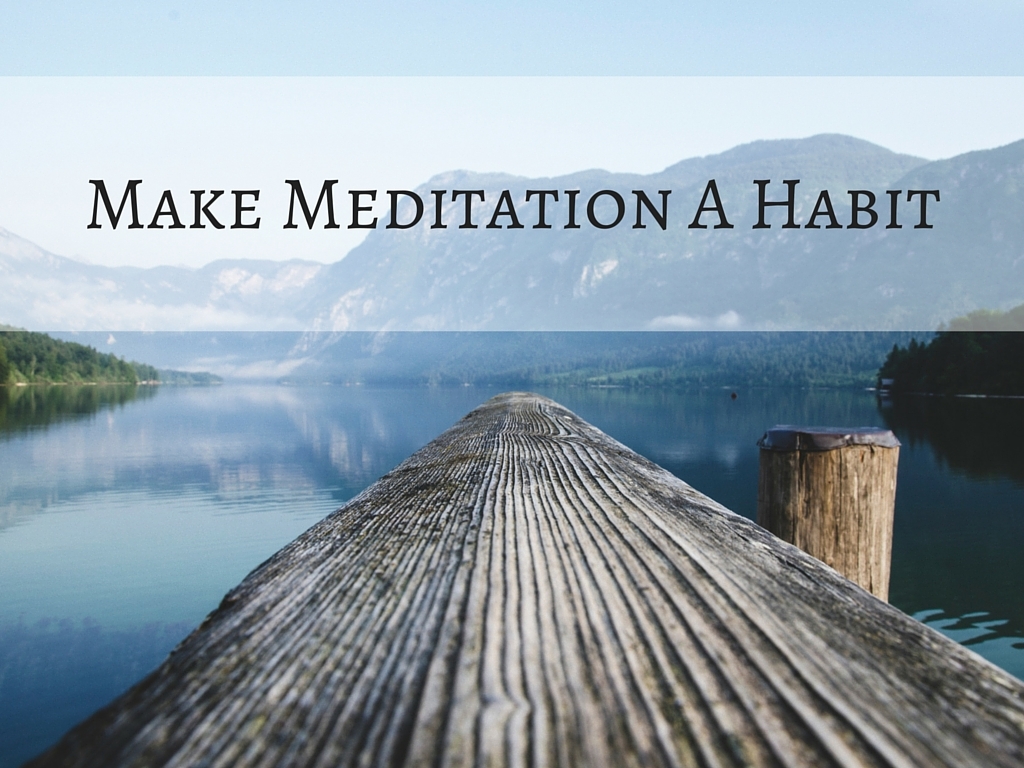
Mindfulness meditation works best when you can make a regular habit of it. Even just 5-10 minutes per day can have a huge impact on your mood, perspective and attitude. I have helped many clients over the years to develop a daily meditation practice. Here are some of the ways my clients have fit mindfulness practice into their daily routines.
After brushing your teeth in the morning: “Piggybacking” your daily meditation practice on something that already reliably happens in your normal routine is a great way to help you make it a habit. A lot of people think the morning is the ideal time to meditate, and I agree that it can be nice to start off the day with a clear mind. At the same time, I’ve seen a lot of people get stuck in this idea that the perfect time to meditate is in the morning, when they’re just not a morning person. For some people, their friction level is just too high in the morning. If that’s you, I encourage you to be flexible about when you practice – maybe first thing in the morning just isn’t the best choice for you right now. Perhaps, instead, you meditate right after brushing your teeth at night.
When you arrive at work: Some people I know integrate meditation into planning for their day. When they first arrive at their desk in the morning, they meditate for five or 10 minutes and then use that clearheaded space to identify their top priorities for the day. This can also help you start the day with a clear mind and open heart.
At lunch: Integrating a mindful eating practice into your lunchtime routine can be beneficial. Not only does it give you a built-in time of day where you can develop a meditation habit, but it can also help you develop a more intentional relationship with the food you eat. So many of us multitask while eating. Especially at lunch, it’s easy to get caught up in checking email or Facebook on your phone or computer. And when you don’t pay attention to what you’re putting in your body or your body’s response to it, you can develop some unhealthy eating habits. Taking a few mindful bites at the beginning or end of your meal can have a huge impact on your eating patterns. Plus, you get your daily meditation practice as a bonus.
On your way home: Try engaging in a daily meditation on the bus with your earbuds in or sitting in your car in your driveway before stepping inside. This can be a great time to intentionally transition from the business of the workday and arrive home fully present, leaving work at work.
Right before bed: Some of my clients love to meditate before bed. This can really help to slow down your thoughts and allow you to rest. While I don’t usually recommend lying down when meditating because it can make you fall asleep, you can use this to your advantage. Some of my clients who have trouble sleeping will meditate sitting up for 5 or 10 minutes, and then continue the practice lying down, facilitating an easy entry into the land of nod.
While the above suggestions can help, the best time to meditate is when you’re most likely to do it. You want to find a time that makes it as easy as possible to meditate regularly and that has the least amount of friction as possible. If you know that you’re not a morning person, don’t try to meditate first thing when you wake up. If you know that you are really exhausted when you go to bed at night, don’t try to meditate then. Find the time of day that feels most likely to facilitate your meditation practice, and set a reminder.





